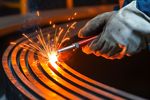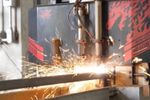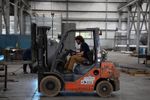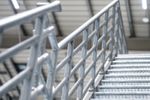Designing a product is one thing. Actually fabricating that product is a whole other thing that requires taking an initial product design through an important step called fabrication design.
When it comes to the product development cycle, it all starts with conception — an idea, if you will. Following this stage comes product design, then engineering, prototyping, and, finally, fabrication. In other words, there’s quite a few steps between product design and production.
Essentially, just because a product has been designed doesn’t necessarily mean that it can be manufactured as such. This is especially true for custom fabricated steel products, which often go from the “design” step along to a “fabrication design” step prior to the product moving on to the other stages of product development.
During the fabrication design stage, the designer and fabricator have to work together to make any necessary alterations to the product in order to address any conflicts between the initial design and the fabrication process that’ll be used to create the part. It’s a collaboration that’s commonly referred to as “steel detailing.” Here’s a closer look.
Steel Detailing Explained
As we covered above, design is the process of making a part become more than just a concept. It’s putting an idea down on paper. Think of it like a “first draft” of sorts.
Following the creation of an initial product design, a steel detailer, often referred to as just a “detailer,” will then take this draft and perform the all-important task of creating shop drawings for a steel fabricator, making any necessary changes to the initial part design to maximize part creation.
A steel detailer is part engineer and part designer since they must analyze a variety of factors to ensure that the end product:
- Can be successfully fabricated
- Won’t sacrifice strength, durability, or integrity
- Will be able to be put together or arranged in the manner intended
Selecting the Right Steel Detailer
A good detailer must possess the following characteristics to be successful at fabrication design:
Communication Skills
The detailer must collaborate with other professionals, such as the designer and the fabricator, when drawing the fabrication design plans. The job isn’t a solo one, and communication and collaboration are the best ways to ensure the successful fabrication of a steel product.
Making design changes to optimize a part for fabrication, for instance, could potentially lead to a part that doesn’t perform how it was intended to. It’s the steel detailer’s role to make sure this doesn’t happen by performing that crucial collaboration function.
Industry Know-how
A detailer must not only be familiar with design, engineering, and fabrication, but must also be familiar with various standards, especially if the fabricated end product is going to be used as part of a construction project. OSHA, AISC, bearing limits, and more must all be top of mind for a good detailer.
If a steel detailer isn’t familiar with these aspects of fabrication design, a poor end product that has to be re-done could be the result.
Design Software Chops
In addition to knowing standards, a detailer should also know how to navigate their way through design software. For example, it’s a good bet that the initial product design was created in a CAD (computer-aided design) program before it was passed along to the detailer.
Detailers therefore need to be familiar with CAD, 3D modeling, and CAM (computer-aided manufacturing) software to gauge how a product can be created. These computer programs can also help a detailer circle back with a designer to communicate and collaborate on where any changes must be made to optimize the part for fabrication.
Metal Fabrication Design Has Lots of Steps for a Reason
As you can see, the product development process isn’t one that’s just done, especially when it comes to steel products. It’s very carefully planned out and there are many steps that must be accomplished and verified along the way.
This isn’t necessarily a bad thing, as these milestones along the product development timeline help ensure that a final product is quality and meets the expectations of all parties involved.
To learn more about metal fabrication design and how our in-house steel detailing team operates here at Southern Metal Fabricators, please contact us.





